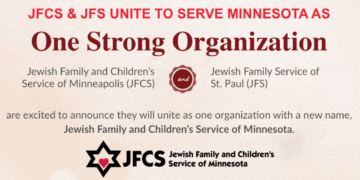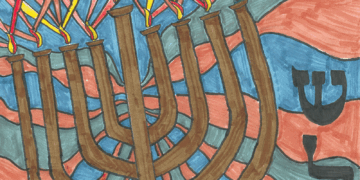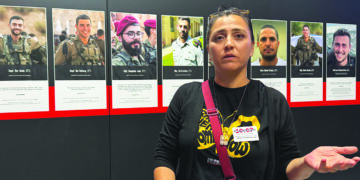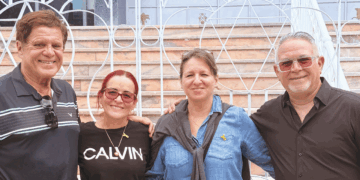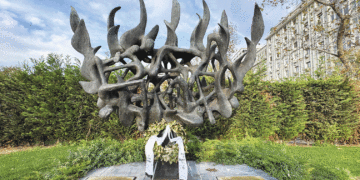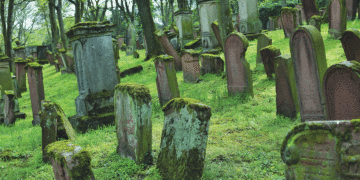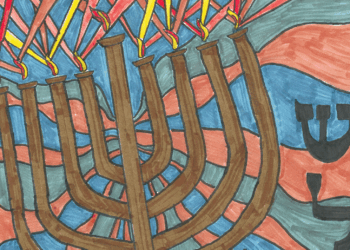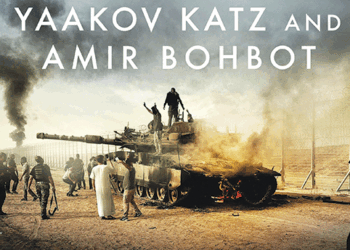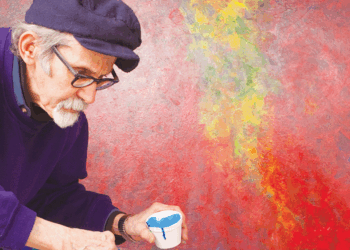Testimony: The Legacy of Schindler’s List and the USC Shoah Foundation, text by Diana Landau and Linda Sunshine, 334 pages, Newmarket Press, $50
Reviewed by NEAL GENDLER
Despite my initial reaction to the subtitle (a movie can create a legacy?), which gave me the notion that this coffee table-size book was merely further glorification of the justly acclaimed Steven Spielberg, I found Testimony to be an engaging work of substance.
The first half is about the making of Schindler’s List — including stills from the film and shots during filming — and how the project affected the participants, especially Spielberg.
“Every single day was like waking up and going to hell,” Spielberg said. “There was sadness on the set every day… actors breaking down from the stress of the recreation” and crew members walking away from the camera in tears. “I cried more making this movie than I cried during any three- or four-month period in my whole life.”
Scenes outside Auschwitz were especially difficult for co-producer Branko Lustig, who began his job interview by pulling up a sleeve to show Spielberg the A-3317 on his arm.
Making the movie gave Spielberg the idea of videotaping 50,000 survivor stories. Lustig was the project’s 50,000th interviewee.
“Sensible people said to me: ‘It’s impossible,’” Spielberg said. But with his reputation, some big-donor backing and enormous volunteer work, it happened. The second half of the book tells how.
Testimony, a 20th-anniversary commemoration by the University of Southern California Shoah Foundation, recounts “Schindler Jew” Poldek Pfefferberg’s years of trying to get someone to write the story; of Thomas Keneally producing a book initially called Schindler’s Ark; of Spielberg’s decision to make Keneally’s renamed international bestseller into a movie; and of Spielberg’s choice of black and white, providing a documentary look.

“We wanted people to see this film years from now and not realize when it was made,” said photography director Janusz Kaminski.
Much of the film was shot in Krakow, Poland, parts of it looking unchanged by the war, using 148 sets and more than 30 locations. We see the effort for authentic appearance — even replicating the Płaszów camp entrance paved with Jewish gravestones.
Schindler’s List was shot in 75 days in early 1993, and Spielberg wasted no time; interviewing survivors began on April 18, 1994, and lasted into 2000. Volunteers filled 235,000 30-minute Beta tapes with testimonies ranging from 9 minutes to 2.5 hours. In 2009, the project began interviewing survivors of other genocides and massacres, such as Rwanda and Cambodia.
By 1996, the foundation’s material was appearing in documentaries, including Survivors: Testimonies of the Holocaust and The Last Days, which included Tom Lantos, the only Shoah survivor to serve in the U.S. Congress.
In Testimony’s second half, we learn how 52,000 interviews became a digitized, searchable archive, and the outreach and educational programs since the project became part of USC in 2005.
Trained catalogers painstakingly — sometimes painfully — viewed 105,000 hours of videotape shot in 56 countries and 32 languages, indexing more than 1.2 million names mentioned by interviewees, plus places and subjects. We’re told how the material was handled — an innovative process producing several patents — and how it’s being used. By mid-2013, 317 courses at 44 universities drew on survivor testimonies.
The enormous undertaking grew unexpectedly from Spielberg’s vision as survivors showed up during filming, many asking him to tell their stories, too.
“Spielberg was amazed to discover that many of these survivors had never before told their stories to anyone,” the book says. His subsequent race against survivors’ mortality followed his conviction that showing them speaking would have the greatest effect.
Illustrated excerpts from such accounts enliven this half, which is interesting and more factual than self-congratulatory. One preventable annoyance: The plural Schindlerjuden — for Schindler Jews — is used throughout, but sometimes incorrectly for a single person. Ouch.
But there’s no quibbling with the effect of the film, the overall quality of this book or the valueof the foundation. Survivors often speak similarly to Rita and Sam Starkman, who wrote Spielberg: “We fulfilled promises we made when we were lying among the dead — that if we survived, we would tell what happened.”
***
Neal Gendler is a Minneapolis writer and editor.
(American Jewish World, 7.18.14)

